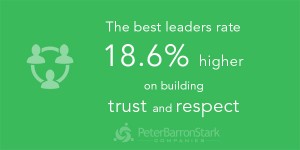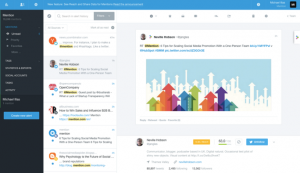In a recent TLNT article the topic of good hires turned bad was explored, with TLNT examining six different situations in which great talent was recruited, hired, and onboarded…only to later reveal to be different than what they were originally thought to be. The phenomenon is nothing new to any hiring manager or recruiter, but the question of what is the most effective way to deal with these situations before they become problematic is always on the mind of people. While TLNT presents some solutions about what to do after this talent has been hired, we wanted to offer some ways you can identify (and avoid if needed) these types of candidates before they become problematic.
 1. The “Drain On Resources” Candidate
1. The “Drain On Resources” Candidate
Who they are: Initially you might view these candidates as viable employees that can bring a lot of value to your organization. But after a hiring process that resulted in an offer, this employee has become the opposite of what you thought: a total drain on resources, either due to bad performance (forcing you to constantly have to retrain the employee) or a bad attitude (forcing you to constantly have to discipline or talk with the employee).
Save Yourself Before it’s Too Late: Personality assessments will come through in significant ways here. Using these types of hiring assessments to identify the personality traits you might not catch in an interview won’t just be a nice thing to tack on to a candidate’s profile – it could mean the difference between hiring a qualified candidate and hiring a deceptive one. Just make sure you’re looking for the right personality traits when you administer these assessments.
2. The “Great On Paper” Candidate
Who they are: They seem fantastic! They have the skills and background that your company doesn’t just want for this position, they need. It’s a match not just for today, but for years to come. That is, until they get hired and – suddenly – they’re not the candidate in person that they were on their resume. They can’t perform the tasks nearly as well, may have exaggerated about their background, and seem to lack everything you thought they would have given how beefed up their application appeared.
Save yourself before it’s too late: They claim they can do the job, why not put them to the test (literally)? Using job simulations in your hiring process tells you if the candidate can perform the job, how well they can perform it, and what skills they possess that they administer into that role. These assessments give you a great view of a candidate’s capabilities while they’re actually on the job. Plus, you have the added bonus of seeing what skills they might have that they’re not taking full advantage of if you do skill-based hiring assessments as well, so you can have a focused training process to make sure you’re bringing out the most in your new candidate.
3. The “Overly Competitive” Candidate
Who they are: You love drive, and you love enthusiasm, and this candidate brings both. They’re passionate about their work, passionate about your organization, and are here to succeed in the role they’re interviewing for before advancing up the company. However, they might be a bit too competitive. Like that one person who always yelled at his or her own teammates during a casual pick-up game, this employee is a bit over the top with her peers – to the point where she alienates her coworkers and creates a hostile work environment.
Save yourself before it’s too late: There’s a couple of ways to approach this during the hiring process, especially with hiring assessments. The most effective way might be to administer a personality test that checks for qualities such as teamwork, friendliness, and cooperation, but it’s not the only avenue you can take. Using job simulations to see how a candidate might work with others can be just as effective to determining the driven candidates from toxic ones. You’ll also want to evaluate if the candidate has played nice with other coworkers in the past, and references can be helpful in that.
Business & Finance Articles on Business 2 Community
(73)








